Do you have a question about the Samsung S24A40 Series and is the answer not in the manual?
General safety guidelines for using the product.
Electrical safety warnings and precautions.
Instructions for installing the product.
Guidelines for operating the product safely.
Steps for cleaning the product.
Recommended posture for using the product.
Guide to assembling and attaching the monitor stand.
Safety measures when moving the product.
Ensuring adequate space for ventilation around the product.
How to adjust the product's tilt and height.
Instructions for rotating the monitor.
Securing the product with an anti-theft lock.
Specifications for using a VESA wall mount kit.
Understanding the monitor's control panel buttons and functions.
Quick guide to direct key functions for menu access.
Description of all available input and output ports on the monitor.
Steps for connecting and using the monitor with a PC.
Using DP, HDMI-DVI, and D-SUB cables for connection.
Connecting headphones, power, and using the product as a USB hub.
How to connect and set up the built-in webcam.
Step-by-step guide to setting up Windows Hello with the webcam.
Adjust picture quality including Brightness, Contrast, Sharpness, Color, and Picture Mode.
Configure Eye Saver Mode, Game Mode, Response Time, Picture Size, and Screen Adjustment.
Manage menu transparency, position, language, and display time.
Access Self Diagnosis, Volume, FreeSync, Eco Saving Plus, Timers, and Input Modes.
Guide to installing and using the Easy Setting Box software.
Potential issues and restrictions during software installation.
Minimum system requirements for software installation.
Steps for installing the latest product drivers.
Steps to take before contacting customer service.
Using self-diagnosis to check for screen issues.
Verifying resolution and frequency settings for display.
Troubleshoot screen switching, blank spaces, and power issues.
Diagnose and resolve no sound, volume, mute, or audio/video sync problems.
Address PC booting beeps and webcam video problems.
Adjusting the screen refresh rate via graphics card settings.
Steps to change display resolution in Windows.
Configuring power-saving modes in Windows.
Overview of model name, size, and power supply.
Operating and storage temperature and humidity ranges.
Table of supported resolutions and frequencies.
Customer responsibility for paid service calls.
Conditions not covered under product defects.
Types of product damage caused by customer mishandling.
Other situations requiring service or potential fees.
Detailed explanation of the FreeSync technology feature.
General safety guidelines for using the product.
Electrical safety warnings and precautions.
Instructions for installing the product.
Guidelines for operating the product safely.
Steps for cleaning the product.
Recommended posture for using the product.
Guide to assembling and attaching the monitor stand.
Safety measures when moving the product.
Ensuring adequate space for ventilation around the product.
How to adjust the product's tilt and height.
Instructions for rotating the monitor.
Securing the product with an anti-theft lock.
Specifications for using a VESA wall mount kit.
Understanding the monitor's control panel buttons and functions.
Quick guide to direct key functions for menu access.
Description of all available input and output ports on the monitor.
Steps for connecting and using the monitor with a PC.
Using DP, HDMI-DVI, and D-SUB cables for connection.
Connecting headphones, power, and using the product as a USB hub.
How to connect and set up the built-in webcam.
Step-by-step guide to setting up Windows Hello with the webcam.
Adjust picture quality including Brightness, Contrast, Sharpness, Color, and Picture Mode.
Configure Eye Saver Mode, Game Mode, Response Time, Picture Size, and Screen Adjustment.
Manage menu transparency, position, language, and display time.
Access Self Diagnosis, Volume, FreeSync, Eco Saving Plus, Timers, and Input Modes.
Guide to installing and using the Easy Setting Box software.
Potential issues and restrictions during software installation.
Minimum system requirements for software installation.
Steps for installing the latest product drivers.
Steps to take before contacting customer service.
Using self-diagnosis to check for screen issues.
Verifying resolution and frequency settings for display.
Troubleshoot screen switching, blank spaces, and power issues.
Diagnose and resolve no sound, volume, mute, or audio/video sync problems.
Address PC booting beeps and webcam video problems.
Adjusting the screen refresh rate via graphics card settings.
Steps to change display resolution in Windows.
Configuring power-saving modes in Windows.
Overview of model name, size, and power supply.
Operating and storage temperature and humidity ranges.
Table of supported resolutions and frequencies.
Customer responsibility for paid service calls.
Conditions not covered under product defects.
Types of product damage caused by customer mishandling.
Other situations requiring service or potential fees.
Detailed explanation of the FreeSync technology feature.
| Aspect Ratio | 16:9 |
|---|---|
| Brightness | 250 cd/m² |
| Viewing Angle | 178° (H) / 178° (V) |
| Screen Size | 24 inches |
| Resolution | 1920 x 1080 (FHD) |
| Response Time | 5ms |
| Contrast Ratio | 1000:1 |
| Connectivity | VGA |
| VESA Mount | 100 x 100 mm |
| Color Support | 16.7 Million |
| Power Consumption | 25W (Typical) |

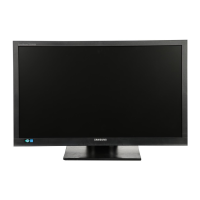

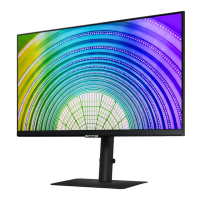
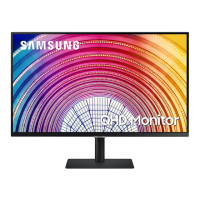
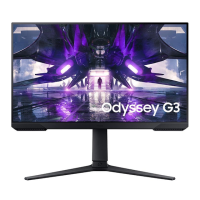
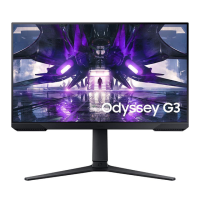
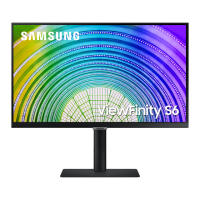
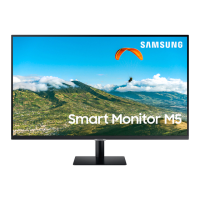
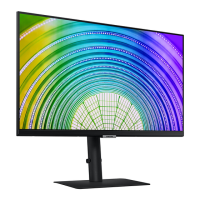


